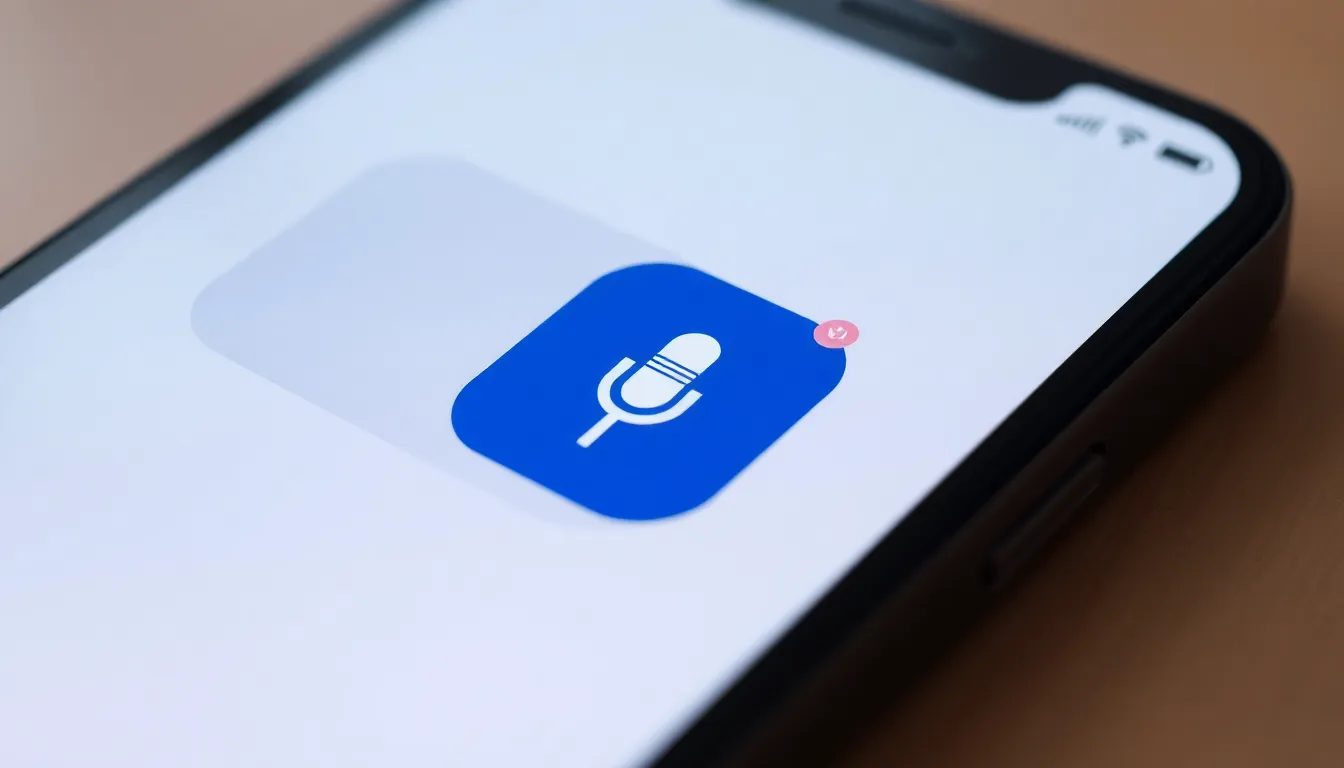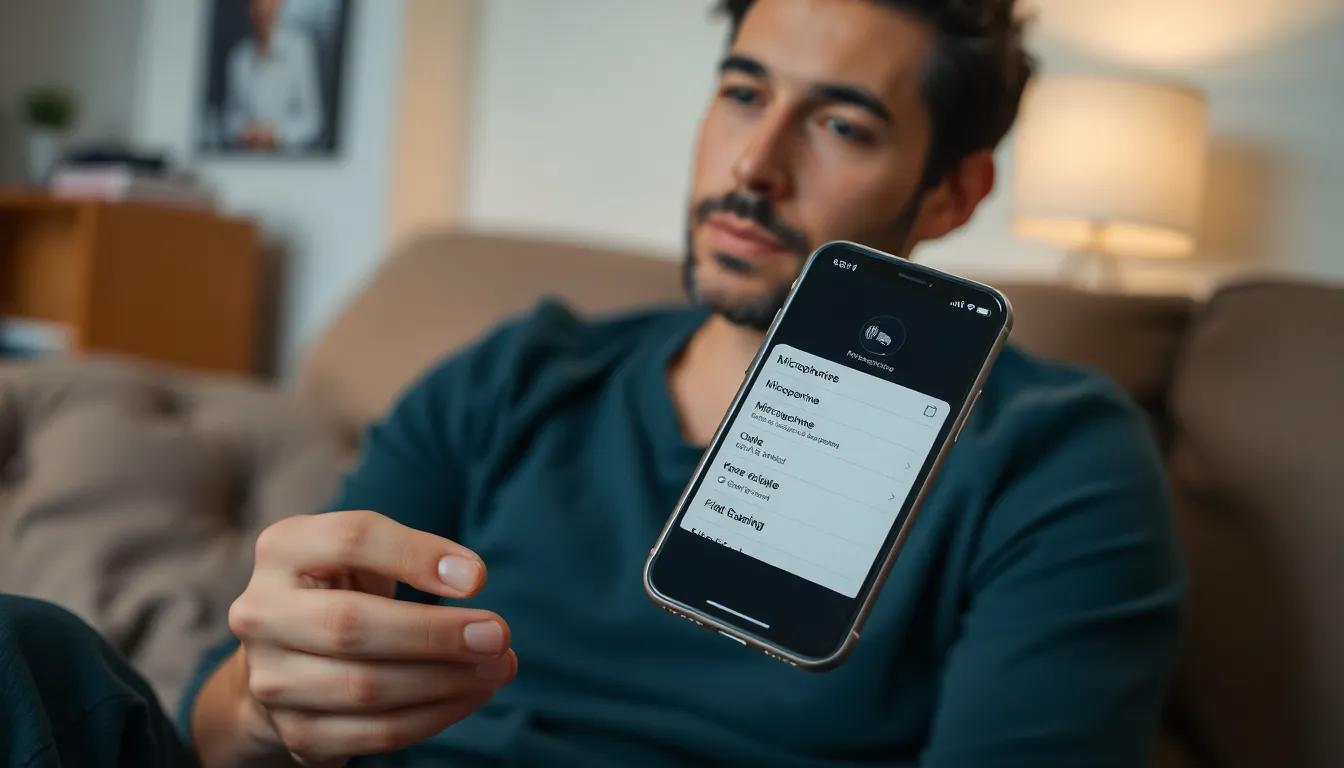In a world where privacy feels like a rare commodity, knowing how to turn off the microphone on an iPhone is like discovering the secret to a hidden treasure. Whether it’s an awkward moment during a video call or an unexpected eavesdropper in your pocket, mastering this simple task can save the day.
Table of Contents
ToggleUnderstanding Microphone Settings on iPhone
Microphone control offers significant privacy benefits. It allows users to manage when their devices listen and record audio.
Importance of Microphone Control
Microphone control enhances user privacy. Managing audio access contributes to protecting sensitive conversations, especially in public settings. Unwanted app permissions can lead to eavesdropping risks. Controlling microphone access ensures that only trusted applications utilize this feature. Maintaining awareness of microphone settings aids in a proactive approach to personal security.
Common Scenarios for Turning Off Microphone
Multiple scenarios warrant microphone deactivation. During video calls, anxiety may arise about unwanted audio capture. In meetings, people might prefer to turn off the microphone to foster a distraction-free environment. Additionally, unexpected app prompts to access the microphone can raise concerns. Users often disable the microphone when recording videos or audio messages in crowded spaces. Adjusting settings in these situations fosters an environment that prioritizes privacy.
Step-by-Step Guide to Turn Off Microphone on iPhone

Turning off the microphone on an iPhone involves a few straightforward steps. Knowing how to manage these settings can help maintain user privacy effectively.
Using the Control Center
Accessing the Control Center allows quick microphone adjustments. Swipe down from the top-right corner on newer models or swipe up from the bottom edge on older models. Look for the microphone icon in the control panel. Tapping this icon can disable the microphone temporarily when in use, such as during a call or a recording session. This action does not affect other settings but protects privacy during specific situations.
Adjusting App Permissions
Managing app permissions provides greater control over microphone access. Navigate to the iPhone’s Settings app and select Privacy. Tap on Microphone to view a list of installed apps that have access to the microphone. Toggle off access for any apps that shouldn’t utilize the microphone, ensuring personal conversations remain private. Users can regularly check this list, adjusting permissions based on app usage to mitigate privacy risks.
Troubleshooting Microphone Issues
Microphone issues can hinder users’ experiences with their iPhones. Identifying and resolving them quickly is essential for maintaining privacy.
When Microphone Won’t Turn Off
Sometimes, the microphone won’t turn off even after following the usual steps. First, ensure that the device has the latest software version installed. Outdated software might cause settings to malfunction. Next, check if any apps are using the microphone. Some applications may remain active and override the settings. Another option is to restart the iPhone. Turning the device off and back on often refreshes settings and resolves minor glitches. If these measures don’t work, resetting all settings can provide a solution.
Resetting iPhone Settings
Resetting iPhone settings often fixes persistent microphone issues. Start by navigating to the Settings app, then select General. Within General, look for Reset and tap it. Choose Reset All Settings to restore default configurations. This action won’t erase personal data but will reset system settings like Wi-Fi passwords and wallpapers. After resetting, revisit microphone settings. Reconfiguring permissions for each app can ensure optimal privacy and functionality moving forward.
Alternative Methods for Enhanced Privacy
Enhancing privacy on an iPhone involves several alternative methods beyond simply turning off the microphone. Users can effectively manage their privacy through different settings and features.
Using Airplane Mode
Activating Airplane Mode serves as an effective way to ensure the microphone remains inactive. Turning on Airplane Mode disconnects all wireless signals, including cellular, Wi-Fi, and Bluetooth. As a result, apps that rely on these connections cannot access the microphone. Users can enable Airplane Mode by swiping down to access the Control Center and tapping the airplane icon. This method is particularly useful in sensitive environments where privacy is paramount. While using Airplane Mode, users can still access device functions that don’t require internet or cellular connectivity.
Disabling Siri
Disabling Siri contributes significantly to enhancing privacy. The voice assistant is always ready to listen for activation, which can inadvertently lead to unauthorized access to conversations. To disable Siri, users can go to Settings, select Siri & Search, and toggle off options like “Listen for ‘Hey Siri'” and “Press Side Button for Siri.” By turning off these features, users eliminate potential eavesdropping risks. It’s important to regularly review settings for voice recognition features to maintain privacy, especially in public settings.
Turning off the microphone on an iPhone is a crucial step in safeguarding personal privacy. By understanding how to manage microphone settings users can take control of their device’s listening capabilities. This knowledge not only protects sensitive conversations but also enhances overall security in various situations.
Regularly checking app permissions and utilizing features like Airplane Mode can further bolster privacy. Staying proactive about microphone access ensures that users can enjoy their devices without the worry of unwanted eavesdropping. Prioritizing these practices fosters a safer digital environment where personal information remains secure.

